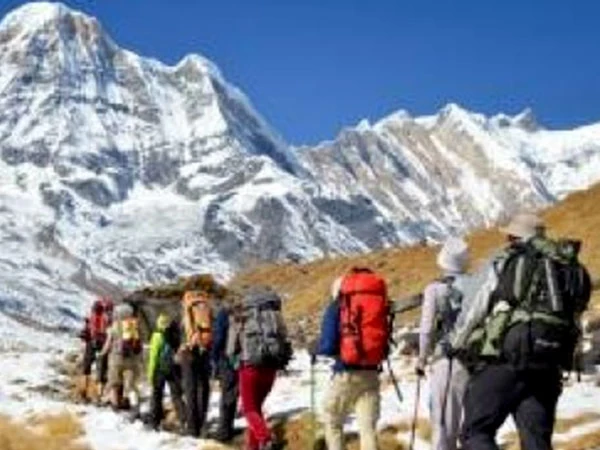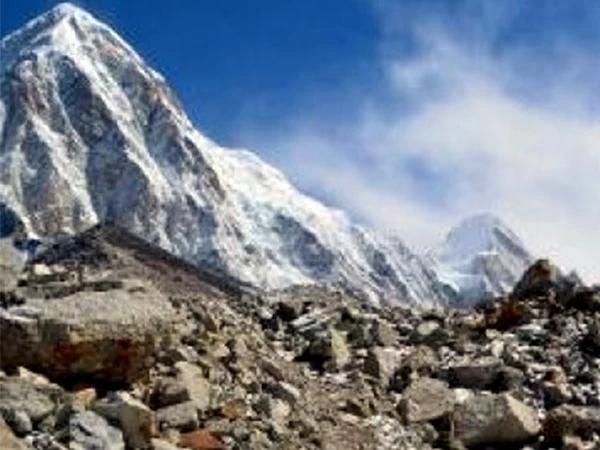Top 10 Attractions of the Everest Base Camp Trek
Do you ever wonder what it’s like up there, at the foot of the tallest mountain in the world, among the snow-capped mountains, measuring scintillating moments with foggy breaths? The way the stone-cold wind hits your arid skin and sends off tingles down your spine. How the adrenaline kicks in and how each step elicits an awe of this picturesque scenery in front of you. To solidify your revelry, here are top ten reasons why you should incontrovertibly, plan your next trip to the Everest Base Camp (EBC). For travel junkies and trekkers, this adventurous path is a known destination. Irrefutably regarded as one of the most wickedly difficult treks around the world, EBC stays true to its title. Individuals who have decided to embark on this journey would likely need to consider a set of factors holistically before making the final call. Soaked in the glory and pride of the mountaineering aesthetics, EBC has a lot to offer when it comes to tradition, culture and meaningful physical structures as well. So, without further ado, let’s unravel what the trek of EBC awaits.
#1 Lukla Airport
The widely acclaimed Himalayan Mountain Flight from Kathmandu to Lukla is one of a kind. The Tenzing-Hillary Airport is situated at Lukla at an elevation of 2840 meters. The runaway of the airport is accessible only to helicopters and small STOL aircrafts such as Twin Otter, Dornier Do 228, Pilatus PC-6, etc. The length of the runway is 527 meters with a significant 11.7% gradient.
It was named after the individuals who first stepped on Everest, Tenzing Norgay of Nepal and Sir Edmund Hillary of New Zealand. The airport lies at the edge of the town of Lukla and is widely known as one of the most dangerous airports in the world. The very beginning of the trek will prove to be an enthralling experience as you land on an unconventionally short runway on a steep inclination. The location of the airport is sure to take your breath away. In addition, Lukla is dotted with various lodges and shops for tourists.
#2 Namche Bazaar
After leaving Lukla and crossing the stunning Dudh Koshi Valley, the trekkers will reach a small and pretty town called the Namche Bazaar. Namche Bazaar is the perfect kick-start point to the Everest Base Camp and is quite a popular tourist hub in the Khumbu Valley region. Most of the trekkers plan to stay here for a number of days to properly acclimatize themselves with the chilling Himalayan atmosphere. You will be amazed to see the various services offered by Namche Bazaar such as convenient lodges, restaurants, well-stocked stores with consumer products and markets as well as cyber cafes hooked up with fast Internet speed.
In earlier days, it was the capital of the Khumbu Sherpas. Namche Bazar is also endorsed as the center of Sherpa culture as most people residing in this area are native Sherpas, who are well attuned to both the beauty and perils of the Himalayas. The unique tradition and the hospitable nature of the Sherpas are echoed far and wide beyond the mountainous kingdom. Moreover, Namche Bazaar also offers an alluring sight of the beautiful glacial valley and majestic peaks like Lhotse (8414m), Everest (88448m), Thamserku (6608m) and numerous other peaks in the Everest vicinity. Namche Bazaar is an epitome of a successful tourism practice in Nepal. The headquarters of the Sagarmatha National Park also lies here, which offers information regarding the park and pictures of different mountain peaks as well as the Sherpa Cultural Centre reflecting their culture and ancient ethnic lineage.
#3 Tengboche Monastery
Another attraction of the EBC trek is the famous Tengboche Monastery which is located in the oldest Sherpa village of Nepal. Located in the eastern side of the Khumbu region, Tengboche is a sacred Tibetan Buddhist monastery of the Sherpa community and also, the largest gompa in the Khumbu region of Nepal. Besides the oozing tranquility and a touch of spirituality, the Monastery allows you to dwell in the panoramic view of the beautiful Himalayan range, which subsumes Lhotse (8414m), Nuptse (7861m), Ama Dablam (6856m), Thamserku (6608m), and Taboche (6367m). The trails leading to Tengboche monastery endows the richness of Sagarmatha National Park. The dense Rhododendron forest and pine trees form a natural canopy and give you the true essence of the wilderness. Various endangered animals such as Himalayan Tahr, Musk Deer, and Lophophorus, the national bird of Nepal can also be spotted along the way if you are fortunate enough.
#4 Everest Base Camp
The culmination of the trek basks in the halo of the magisterial Everest Base Camp itself. The base camp holds an imperative place as it is an optimum point that decides the onset of the Mount Everest expedition. Located at an altitude of 5,364 meters, reaching EBC is no joke and one should feel accomplished for where they stand. It takes a strong will and determination to commit to a taxing and an arduous task of reaching EBC.
#5 Kala Patthar
Kala Patthar is one of the top attractions of the Everest Base Camp trek. Situated at an elevation of 55 50 meters, it resides at the southern face of Mt. Pumori (7165m). This point is also the highest elevation of the whole trek. Its ascent is very popular among the trekkers as it projects the most accessible close-up view of Mt. Everest (8848m), Nuptse (7861m), Khumbu Glacier and also a short glimpse of the northern flank and the peak of Mount Lhotse (8414m). The ascent to Kala Patthar takes around 2 hours from Gorakshep, the last settlement with few teahouse lodges.
#6 Sherpa Culture and Tradition
Sherpas have earned a reputation worldwide for their impeccable mountaineering skills and a hospitable nature. They are adept with knowledge about every minute detail about the treks prevalent in the Himalayan region. Also, they showcase a unique set of culture and tradition and take pride in speaking their ethnic language, wearing traditional clothes and promoting traditional architecture. The trek to Everest Base Camp gives trekkers ample opportunities to experience the culture of this cluster of the ethnic group. The valiant Sherpas were raised in the laps of the Himalayas and have made peace with the harsh weather and rugged topography of their area. Nevertheless, they always welcome trekkers with a warm smile and chubby-rosy cheeks. While passing through many valleys on the way, such as Dudh Koshi valley, or settlements such as Lukla and Namche Bazaar, the elite Sherpas will always offer a word of encouragement to the passing trekkers and wish luck for the journey ahead.
#7 Sherpa Culture Museum
The Sherpa Culture Museum is a private museum in Chhorkung that is run by the local photographer called Lhakpa Sonam. It possesses an admirable collection of the Sherpa cultural objects which have been preserved since ages, as well as inspiring pictures and newspaper cuttings celebrating all the Sherpa Everest summiteers. This museum is a hallmark of the region that reflects both the Sherpa culture and architecture along with rich mountaineering history. It can be accessed with a 20-minute uphill walk from Namche's center.
#8 Highest Mountain Range
The absolutely enthralling landscapes of the wonderful views of the snow-mass prodigious giants including Mt. Everest (8848m), Mt. Lhotse (8414m), Mt. Cho Oyu (8188m), and Mt. Ama Dablam (6856m) are a sight to look at after finishing an exacting trek. This is where four of the world’s six tallest mountains are fixated, standing tall, formidable and mighty, creating the foundations of the Third Pole as we see it. These ranges have established themselves as one of the greatest natural landmarks on the planet.
#9 Sagarmatha National Park
Sagarmatha National Park is one of the nationally protected areas in the eastern region of Nepal. The majority of the Everest Base Camp trek falls under the vicinity of the park area. It is the first national park of Nepal to ever receive the titular honor of the World Heritage Site. The park functions as a habitat to hundreds of different species of flora and fauna.
The national park is covered with a thick and dense forest of pine and hemlock in the lower elevations and rhododendron, juniper, birch and silver fir at a relatively higher elevation. Coming to the fauna, it was recorded that there are 118 species of birds, and there are some rare mammals such as the snow leopard, Himalayan black bear, red panda, and musk deer.
#10 Khumbu International Library
Apart from the Tengboche Monastery, Khumbu International Library is yet another attraction of Khumbu Valley region. The library is set at heart of Namche Bazar. Khumbu International Library is a noticeable part of the Sheri Khangba Centre. The International library houses books, magazines, and video documentaries covering all the aspects of the mountains prevailing in the Himalayan region of Nepal. Along with it, one can also indulge in digging up information on mountains over the world.
There is also an availability of a directory that provides references covering each and every mountain existing in every continent. The perusal of the books provides information regarding biographies, expeditions, guides, historical accounts, flora and fauna, geographical and geological features of the world. It also sheds light on the history and findings of the early explorations of the mountains. The library invites everyone with open arms, from locals to foreigners after a small amount of entrance fees is paid.
Although the attractions of the EBC trek cannot be circumscribed within just 10 things, these are the best ones that are cherry-picked from the lot. There are numerous teahouses that are scattered throughout the trails which cater to a trekker’s needs especially a warm cup of tea and a bowl of garlic soup to name a few. Let’s hope the above-mentioned points made a compelling case for why you should absolutely plan your next trek to EBC soon. So, hurry and spark up your humdrum routine with a getaway to the widely recommended EBC trek.




